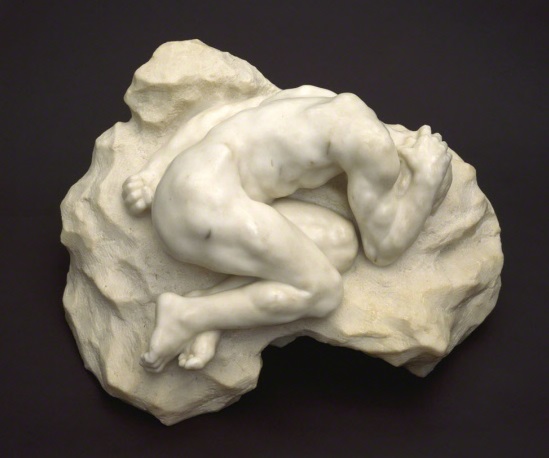Auguste Rodin, Despair, c. 1890

The Work
This marble sculpture is a larger version of a figure from The Gates of Hell, based on the poem by Dante. The face of this man is hidden, and the fingers of his right hand are buried in his hair. His left arm ends in a closed fist, and his toes are clenched.
Historical Moment
The Third Republic (1870-1914) was an era of peace in France. Prosperous cities commissioned works of art for public display, and the French government commissioned The Gates of Hell in 1880, for a museum of decorative arts in the Louvre. Rodin spent the rest of his life working on this masterpiece, but it remained unfinished. Several figures from The Gates were nevertheless remade in larger format and presented as individual sculptures, like this one.
The Genre
Romanticism was a movement that began near the end of the 18th century and had its strongest impact in the 19th century. The image sometimes told a familiar story from literature, and the word "romantic" derives from the word "roman" in French, meaning "novel" in English, a literary work of fiction. In romantic sculpture, artists sought to engage the viewer’s emotions with dramatic effects of facial expression and movement.
The Artist
Auguste Rodin (1840-1917) was born in Paris to a family of low social status. He was admitted to the School of Decorative Arts, and he studied sculpture with Antoine-Louis Barye. He did not have success at the beginning of his career, because his sculpture contradicted the rules of classicism by incorporating intense emotion and eroticism. Later, however, he became the most famous French sculptor in the world. He often made several versions of his sculptures in different sizes. His best-known works are The Thinker (1882) and The Kiss (1886).

